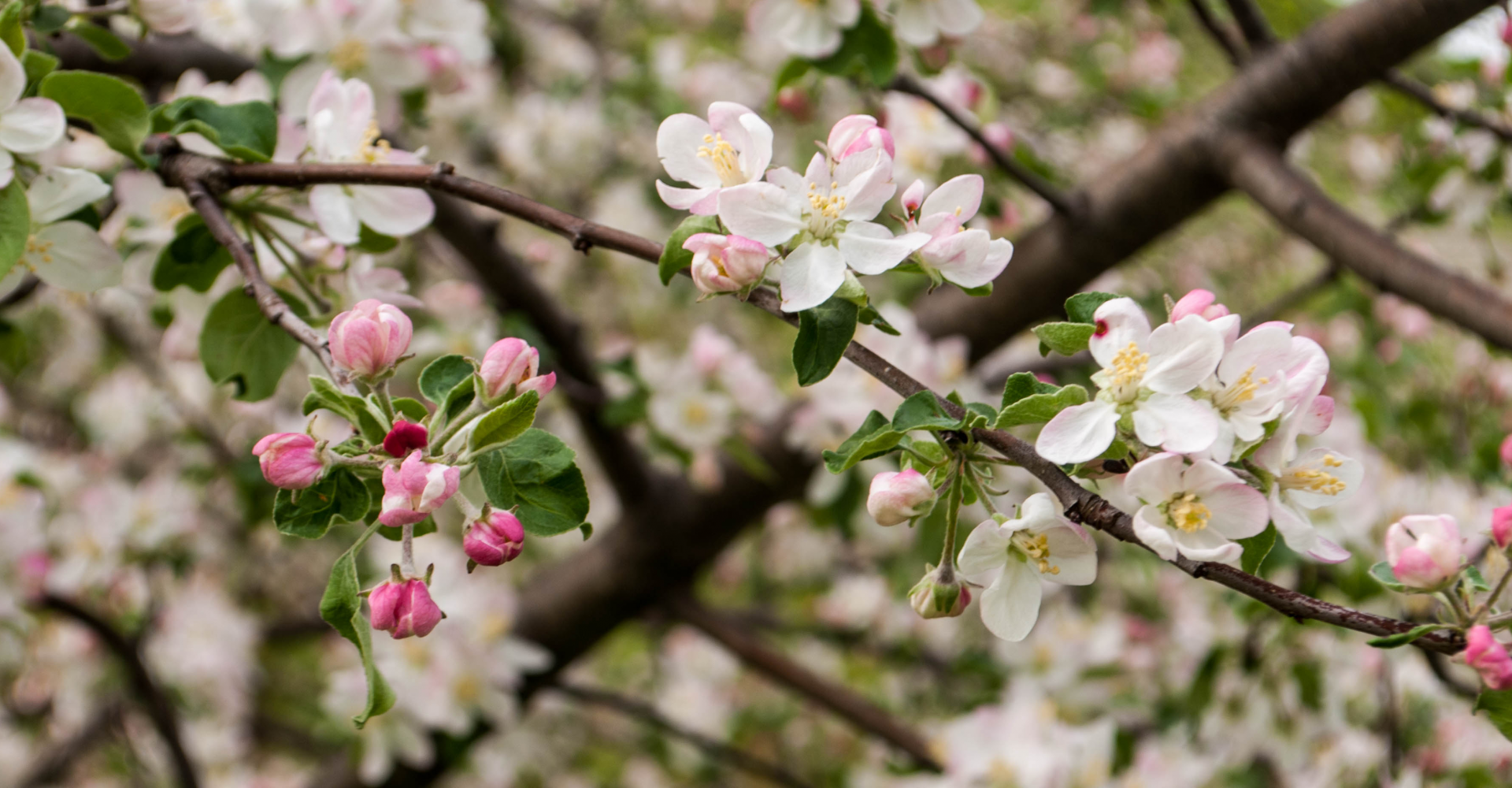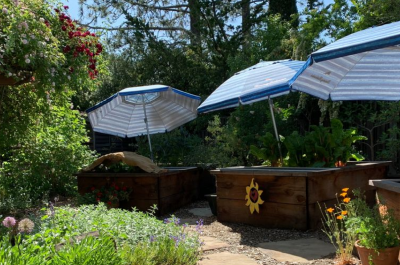As spring starts earlier each year, it can be easy to forget the subtle signs of how the season is shifting. According to NOAA, March temperatures in the U.S. have been above average in seven of the last ten years. It’s become something expected, normal even.
But from his Philadelphia patio, a nectarine tree won’t let Mike Ruzzo forget that the earlieness is not normal. For the last few years, he’s kept a track of the tree’s spring progress. “That has been consistent each year getting a little bit earlier,” he said.
Ruzzo pays attention to trees. He notices when buds begin to form, when leaves break open and when blooms begin to fill in the branches.
— Mike R
This year, trees began showing those signs of spring very early in his area. “It’s just been overall very warm which is nice for getting out but that doesn’t mean it doesn’t feel weird.”
Ruzzo isn’t the only ISeeChange community member who noticed spring arriving early this year. ISeeChangers from Louisiana to Bulgaria saw signs of spring before they expected to, in some areas up to a month earlier than the 30-year average:
Early spring can also be a warning sign of weird weather and climate trends to come as we transition to summer. Here are the things to look for:
False Spring
False springs occur when spring starts early, and then temperatures drop below freezing again. This can damage tender plants like fruit trees and hurt harvests. Frost damage after an early spring in 2012 resulted in over $200 million of damage to fruit trees in Michigan alone. Fruit trees in particular are at risk:
This dramatic shift from warm back to cold can also be hard on migratory birds. According to the Audubon Society: “The perfect time for a bird to arrive on its breeding grounds is a balance of two pressures. On one hand, it needs to arrive early to claim prime territory. On the other hand, if it moves north too far or too fast, it might freeze or starve.”
Same goes for animals waking up for hibernation and losing food sources. This year, bears were seen out of hibernation as early as February in the U.S., Russia and Finland.
If you experience a false spring or any kind of late freeze in your area, be sure to tell us about it in a new post and keep eyes out for the impacts!
After warm temperatures in early March, sharp fall in temperatures and snow in end of March.
Longer growing season
When spring starts early and a late freeze doesn’t occur, the growing season becomes longer than normal. If this happens in your area, you may experience a range of impacts depending on where you live and how much rain you get throughout the warm period.
When spring starts early, so do allergies
Some of the earliest plants to bloom in the spring are trees which can be a major source of allergies. In particular, birch, cedar and oak trees produce pollen that is highly allergenic according to experts at the Asthma and Allergy Foundation of America.
Pollen is already everywhere. I don’t think this happened this early last year.
In addition to earlier allergies, early springs may also be making allergy season more severe. A 2019 study, researchers at the University of Maryland found that places that experienced early spring had a 14 percent increase in the prevalence of seasonal allergy symptoms as compared to years when spring arrived at a normal time period.
As with many impacts of a longer growing season, allergies are affected by precipitation as well as temperature. Rain can help wash pollen away and reduce allergy symptoms, so if you’re experiencing a dry spring, your allergies may be worse.
Last year, we wrote a deep dive story how more severe allergy seasons may hit children the hardest. If you or someone that you know is an allergy sufferer, tell us when the sneezing and itchy eyes start this year and how far into summer the symptoms last.
Mosquitos and ticks take advantage of the warm temperatures
In addition to allergies, longer growing seasons can increase health risk related to bugs that are disease vectors like mosquitoes and ticks because they become active earlier in the year. With that in mind, both mosquitoes and ticks prefer wetter conditions, so if spring is dry in your area, you will likely see fewer of both types of bug.
Mosquito. Just killed one. Wayyyyy too early for mosquitos in Vancouver
Ticks typically require the ground temperature to be above 45°F (7.2°C) to become active while mosquitoes prefer temperatures above 50°F (10°C). With more warm-weather days, come more days at which you may be at risk of being bitten by either a mosquito or tick, and thus more at risk of picking up a disease.
According to the CDC, the most common diseases spread by ticks to humans in the United States are: Lyme disease, babesiosis, ehrlichiosis, Rocky Mountain Spotted Fever, anaplasmosis, Southern Tick-Associated Rash Illness, Tick-Borne Relapsing Fever, and tularemia.
The most common mosquito-borne illness in the U.S. is by far West Nile virus, but other diseases can impact communities as well. In the warmest areas of the Southeast and Texas, and particularly Florida, communities have had a slight risk of diseases like chikungunya and zika in the past. Last fall, ISeeChangers in the Northeast observed unusually high levels of the mosquito-borne disease EEE, Eastern equine encephalitis virus.
If you’ve seen mosquitoes or ticks out and about already this year, or if you have an experience with a vector-borne disease, be sure to post about it.
Longer growing seasons can mean more drought and wildfire
While mosquitos and ticks have the greatest impacts during a rainy spring, dry weather during an early spring can also be dangerous. As the weather warms up and plants become active, they may dry out.
Early springs can be especially problematic in areas of the Western U.S. which rely on winter snowpack for the majority of their annual precipitation. In forested areas, dry conditions make trees more vulnerable to pests and can create the prime fuel for larger and stronger wildfires. Research has found that wildfire activity is often more severe after early spring snowmelt.
Early spring can also be difficult for farmers if rain is below normal. Longer growing seasons with plenty of water can lead to good harvests, even bigger ones.
— Jim Dyer
But without the necessary water from rain, farmers will either have to make up for it through irrigation or their crops may struggle.
If you are experiencing an early and dry spring, tell us what it’s like in your area and keep an eye on your fire risk.
Other weirdness to look out for as we head into summer
- Keep an eye on nearby lakes and ponds. Warm, wet weather is ideal for algae growth.
- Keep eyes out for new bugs and critters you don’t remember seeing, before. Longer, warmer growing seasons make it easier for animals and plants to make homes in new areas.
- Let us know if you see any unusual animals — or animals behaving unusually!
- Recreational habits are likely already a bit weird with the spread of COVID-19, but if you find yourself changing your time outdoors because of the weather, share those moments with us.
Don’t forget that you’re the expert in your own backyard and you may notice signs of change that we haven’t even thought of. Every sighting matters!




